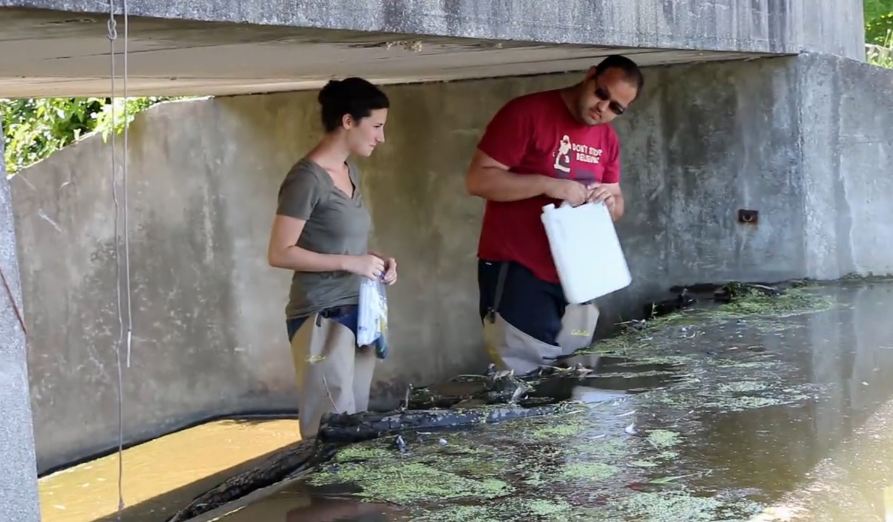Green infrastructure projects highlighted in documentary
New Paltz biology professor David Richardson and students from multiple academic disciplines have produced a documentary about the College’s ongoing green infrastructure projects to combat flooding on campus.
The video was a collaborative effort between science students (majoring in environmental geochemical sciences and computer science) and students from visual arts and liberal arts (majoring in graphic design and digital media production).
“This project was my first experience working closely with students from visual arts,” said Richardson. “It was truly an interdisciplinary effort with constant feedback between the students, faculty, and staff. The resulting documentary and infographics from this collaboration are a testament to the quality of students across science and engineering, fine arts, and liberal arts and sciences.”
The short documentary details a collaborative project between New Paltz faculty, staff, and students; the Hudson River Estuary Program; and the New York State Water Resources Institute to measure water quality on campus and highlight green infrastructure projects that will reduce the severity and impacts of floods, and begin the long-range transition to sustainable storm water and watershed management.
Participants in the project include Richardson, Caitlyn Maceli ’15 (Environmental Geochemical Sciences), Steven Dimeglio ’14 (Environmental Geochemical Sciences), graduate student Michael Forcella (Computer Science), Lisa Mitten (Campus Sustainability Coordinator), and KT Tobin (Associate Director, Center for Research, Regional Education, and Outreach).
Richardson said that regional climate change models indicate an increase in temperature and increased probability of severe precipitation events in the Hudson Valley. In 2011, the New Paltz campus and surrounding Village of New Paltz experienced considerable flooding in the wake of Hurricanes Irene and Lee.
“I looked at all the biology and chemistry of what’s happening underneath the surface, and then we had a computer scientist construct the buoy, which takes data every five to 10 minutes so we can track the storms and figure out what’s happening,” said Maceli. “We found that porous pavement was a good way to get surface water to enter the ground and not be problematic. And we put in vegetative bio swales by Crispell Hall that will allow heavy metals to be trapped in the vegetation and kept from entering the Gunk.”

